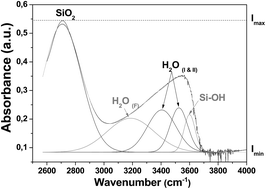Vapor hydration of a simulated borosilicate nuclear waste glass in unsaturated conditions at 50 °C and 90 °C
Abstract
Vapor hydration of a simulated typical French nuclear intermediate-level waste (ILW) glass in unsaturated conditions has been studied in order to simulate its behaviour under repository conditions before complete saturation of the disposal site. The experiments were conducted for one year at 50 °C and 90 °C and the relative humidity (RH) was maintained at 92% and 95%. The glass hydration was followed by Fourier Transform Infra-Red spectroscopy (FTIR). The surface of the reacted glass was characterised by Scanning Electron Microscopy (SEM) and Transmission Electron Microscopy (TEM). The chemical and mineralogical composition of the alteration products were studied by Energy Dispersive X-ray Spectroscopy (EDX) and μ-Raman spectroscopy, respectively. The glass hydration increased with temperature and RH and led to the formation of a depolymerized gel layer depleted in alkalis. The glass hydration rate decreased with time and remained almost unchanged for the last three months of exposure. Overall, the ILW glass hydration rate was similar to that obtained with the SON68 high-level waste glass.


 Please wait while we load your content...
Please wait while we load your content...